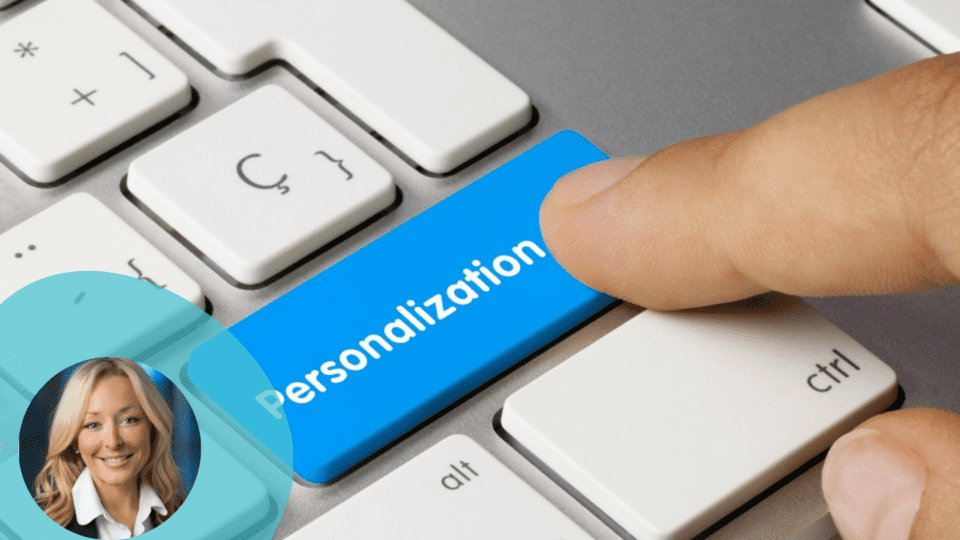Fast-moving innovation is a tricky thing. What was a surprise-and-delight experience for customers two years ago is now an expectation. And when that expectation isn’t met, it’s a big problem. For example, according to Forbes, 71% of B2C customers expect companies to deliver personalized interactions and 70% are frustrated when they don’t.
Personalization is the act of tailoring an experience based on information a company has learned about an individual. Basically, customers now expect to feel known. The good news is that personalization is a huge opportunity to build real relationships that drive retention, conversion and loyalty. It’s also a giant undertaking.
Creating a competitive advantage in personalization is based on a company’s ability to capture, analyze and use personalized customer data, as well as understand, customize and optimize the customer journey, all at scale. Scaling requires building a set of enterprise-wide data, analytics, technology, people and governance-related capabilities.
What follows is guidance to help light the way as you build out these capabilities on your journey toward personalization maturity.
Advertisement
1. Predict the future: So often, companies’ attempts to build personalization capabilities take them on a multi-year trajectory that lands them at parity with the past once they arrive. It’s key to start with a clear understanding of the future of your space and build toward that. Skate to where the puck is going to be, not where it currently is. Using an effective future-casting methodology is key.
2. Build a unifying vision: Personalization requires uniting everyone under a shared vision. This vision needs to be driven by a clear understanding of customer pain points and how you can solve them. Think big — way outside the product recommendations box.
3. Focus on the customer: It’s easy to focus on building personalization capabilities and lose focus on the customer. Instead, build practices to stay close to customer insights. For example, you can build the most accurate personalization engine, but if your customer feels that their privacy is invaded or they don’t trust it because the interface is confusing, it defeats the purpose.
4. Create seamless experiences: Personalizing an end-to-end customer experience requires orchestration across channels, so personalization and omnichannel journeys are inextricably linked. Personalization doesn’t work if, for example, you know the customer deeply on the app but they’re a stranger if they call for support. It has to be cross-channel.
5. Unify customer data and insights: We know customer data is critical for personalization. One of the issues is thatcustomer data is often siloed. Product, marketing and customer support all have different data, segments and personas. These need to be unified. Fixing enterprise data can be challenging, but it needs to be done. In the meantime, establish a process for customer journey management and communicate the insights derived from that process across channels. It doesn’t require the same heavy lifting as the data work, and it is a critical building block to driving a unified view of the customer that informs your strategy.
6. Stay practical: Because personalization is a cross-organizational effort, companies can easily get weighed down trying to collaborate across departments to build huge scopes of work. Instead, rapidly test using proofs of concept (POCs). Lean on pilots. Build iterative, flexible, timeboxed plans.
7. Expand your metrics: Look at all conversion metrics, but also add a composite personalization effectiveness score, personalization engagement and, very importantly, lifetime value. Customer lifetime value is critical because personalization is really about building a relationship over time that yields greater share of wallet.
8. Don’t focus on ownership: Personalization is complex and cuts across the entire organization, so the whole organization must be recruited to participate. Someone should be responsible for driving and coordinating all the stakeholders and moving parts, but if only one area of the organization is measured on it, it means the others aren’t incentivized to care, and that stands in the way of your ability to drive change.
9. Let AI help: The right mix of human and machine efforts is different for each company and will change as AI evolves. For now, assume that humans will need to understand and segment customers, define the vision, strategy, journey and solutions, and AI will help to automate the analysis of large data sets and serve content.
10. Don’t forget zero-party data: So much of personalization maturity is gathering data signals to understand who a customer really is and what they truly need. We forget that part of building a relationship is having a conversation. Zero-party data (data that a customer intentionally and proactively shares with a brand) can be a treasure trove of information on behavior and intent, provided that the trust relationship is established and the customer understands the value they’re receiving in return for their openness. Ask questions and show how you can assist them more effectively with a bit more understanding.
If this seems hard, it’s because it is. Many companies struggle to achieve the highest level of personalization maturity in each interaction. The good news is that that’s okay — for now. Customers don’t expect that yet, but personalization maturity is a worthy journey. Done right, personalization should drive competitive advantage, produce a measurably better customer experience and generate higher revenues over time. Just be ruthlessly visionary and then ruthlessly effective at iterative execution, all while staying focused on the customer.
Catherine Iger, VP at Experient Group, is a customer experience expert with 20 years of experience building award-winning digital strategy and experiences for major brands, including AutoTrader.com, UPS, The Home Depot, Coca-Cola, Turner, HoneyBaked Ham and the International Olympic Committee. Her leadership experience across the corporate, consulting and startup worlds gives her a unique perspective on strategy, transformation and problem solving.




